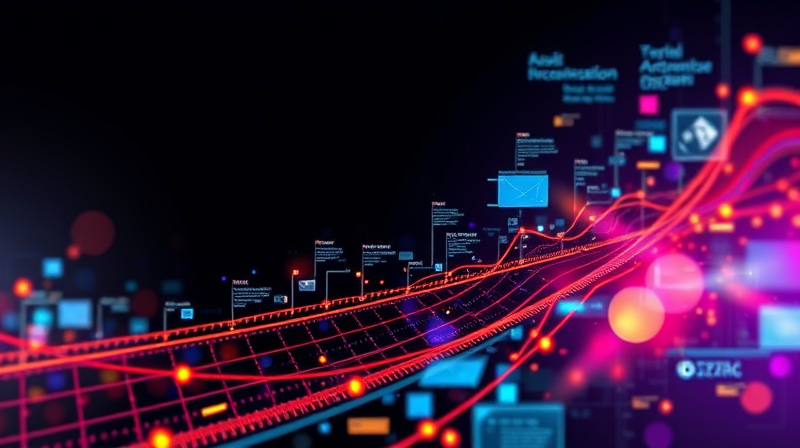In today's ever-changing digital era, educators and administrators are finding incredible value in the intersection of social media and educational data mining. This innovative approach is not merely about extracting data but transforming everyday online interactions into educational gold that paves the way for a more personalized and engaging learning experience. By delving into vast social media platforms, researchers and institutions are beginning to understand student behavior, engagement patterns, and learning preferences like never before.
As we advance into 2025, the integration of artificial intelligence (AI) into educational systems provides a unique opportunity to reimagine learning. The emerging trend of using data mining techniques on social media platforms enables institutions to craft tailored interventions that are both strategic and timely. This technological evolution is now at the forefront of reshaping traditional learning paradigms, helping educators measure, monitor, and enhance student performance in real time.
The Evolving Landscape of Educational Data Mining
Educational Data Mining (EDM) is evolving at a breakneck pace, driven by the influx of social media data and the continuous advancements in AI. These developments are creating powerful tools that can detect nuanced patterns in large data sets. New goals, new measurements, and new incentives are at the heart of this transformation, ensuring that learning becomes a more balanced, student-focused process.
With new analytical techniques and process-driven methods, educational institutions can explore multifaceted dimensions of student engagement. This holistic approach is critical in identifying both strengths and challenges in the traditional educational framework. The alignment of AI and EDM not only helps in boosting academic performance but also in unlocking hidden potential in student behavior and collaborative learning.
One of the most promising areas is the adaptation of process mining—a specialized technique that maps out educational control flows. This allows educators to visually interpret the journey of learning, from the initial engagement with digital content to the final mastery of complex concepts.
Social Media as a Rich Educational Resource
Social media platforms generate an abundance of real-time data, creating an invaluable resource for researchers aiming to understand the dynamics of student engagement. Student interactions, forum discussions, shared multimedia, and even casual comments contribute to a comprehensive dataset that educators can analyze.
By harnessing this data, educators can achieve several goals including:
- Identifying trending topics: Recognizing subjects that spark genuine interest among students.
- Enhancing collaborative learning: Analyzing communication patterns to foster teamwork and idea sharing.
- Optimizing content delivery: Tracking engagement to curate resources effectively.
- Detecting sentiment: Understanding opinions and attitudes towards learning materials and approaches.
These insights serve as the foundation for a more dynamic educational environment that not only reacts to student behavior but anticipates and adapts to future needs.
Real-World Impact and Success Stories
The benefits of educational data mining extend far beyond theoretical applications. Prestigious institutions like the University of Michigan have already begun using data mining tools to identify at-risk students, leading to early interventions and more supportive academic environments. Through these practices, educators have seen a significant improvement in student retention and overall performance.
Similarly, research at Queensland University of Technology in Australia has illustrated the advantages of process mining in the realm of higher education, particularly in managing the unpredictable paths of doctoral research. By visualizing student progress, educators gain actionable insights that help in reducing withdrawal rates and enhancing academic success.
These real-world applications emphasize the transformative power of leveraging social media data to refine educational processes. They also highlight the potential for broad-scale changes in learning strategies, ensuring that methods remain relevant in an increasingly digital world.
Challenges and Ethical Considerations
While the promise of social media mining for educational purposes is immense, it is not without challenges. One of the key concerns is the quality and bias of datasets. Incomplete or skewed data can inadvertently lead to misinterpretations that affect student outcomes. Thus, data quality must be maintained at the highest standard to ensure accurate insights.
Another significant consideration is the ethical handling of data, particularly in light of stringent regulations such as GDPR and CCPA. Institutions must remain transparent about how data is collected, processed, and utilized. The integration of strict data privacy protocols is essential to safeguard student information and maintain trust.
Institutional responsibility in this arena is paramount, ensuring that the potential benefits of educational data mining are fully realized without compromising ethical standards. The balance between technological innovation and respecting data privacy regulations must guide every step of the process.
Looking Ahead: The Future of Educational Data Mining
As we continue to move through 2025, the synergy between social media data mining and educational practices is expected to grow exponentially. The future lies in personalized education plans that are responsive to the unique learning patterns of every student. With the EDM community at the helm, innovative metrics are being developed to measure critical thinking, creativity, and the ability to evaluate information—skills that are indispensable in a digital age.
State governments and educational boards across the nation are beginning to recognize that quality education is inseparable from data-driven insights. Investments in analytics and the adoption of sophisticated data mining tools are paving the way for a future where learning is both adaptive and inclusive.
Ultimately, mining social media for educational insights is a journey toward a more intelligent, responsive, and inspiring educational system. It is a quest to transform scattered data points into measurable success and to ensure that every digital interaction contributes to a richer, more comprehensive learning experience.
This integration of technology and education is a beacon of hope for students and educators alike, promising a future where educational challenges are met with innovative, data-backed solutions that empower learners to thrive in an ever-evolving digital world.








